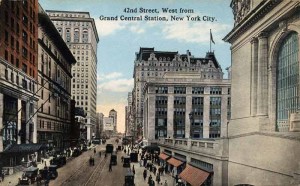Learn About the History of Plumbing in the Buildings of the Northeast
While indoor plumbing is something today that we largely take for granted, there was a time in the Northeast U.S. where indoor plumbing was not only scarce; it was considered an item of luxury. Here is a brief plumbing history from the Northeastern United States.
Indoor plumbing only existed in hotels.
 Before the early 1840s, outside of a few particularly luxurious homes that were “cutting edge” for the era, indoor plumbing was almost exclusively the domain of hotels. Hotels were largely viewed as the lap of luxury, which is why they were able to offer such perks as indoor plumbing.
Before the early 1840s, outside of a few particularly luxurious homes that were “cutting edge” for the era, indoor plumbing was almost exclusively the domain of hotels. Hotels were largely viewed as the lap of luxury, which is why they were able to offer such perks as indoor plumbing.
An architectural feat in its own right, the Tremont Hotel in Boston under the leadership of young architect Isiah Rogers was the first hotel to offer indoor plumbing. It had eight water closets on the main floor. The system worked with a steam pump and a central water carriage system that removed dirty water after use.
Originally, pipes were only made from wooden logs.
Plumbing history isn’t just about the mechanics of the systems; the supplies and parts have evolved a great deal as well. In the early days of piping, it made the most sense to take advantage of the materials that were abundant and therefore most cost-effective.
Rather than PEX or copper that is commonly used today, wooden logs were the material of choice. Hemlock and elm trees were the most popular and were bored into 7 to 9 ft. lengths, with a trunk girth of between 910 inches thick. “Borers” would work in pairs, moving an auger between them to drill out the innards.
As plumbing systems got more sophisticated, water pressure increased, and the wooden pipes would split, which is why iron became more popular at that point.
Croton Aqueduct System
 As innovations go, the Croton Aqueduct System is significant in plumbing history; it made it possible to supply buildings with running water.
As innovations go, the Croton Aqueduct System is significant in plumbing history; it made it possible to supply buildings with running water.
An intricate water distribution system built between 1837 and 1842 to service the growing water needs in New York City, it was one of the first to rely on gravity alone.
As the population grew, this aqueduct system was insufficient on its own and ran in conjunction with the New Croton Aqueduct that was introduced in 1890. The original Croton Aqueduct System was operational until 1955.
Mid 1850s: New homes were designed with separate bathrooms indoors.
By the 1850s more and more homes in the Northeastern United States were enjoying the benefits of indoor plumbing. In addition to indoor toilets, many homes had heated showers that
were not that dissimilar to what you’d see today.
Originally operated with hand pumps, by about the 1850s many homes had enough water pressure to be able to have a functioning shower.
We know where plumbing has been and where it is going, which is why we are your Northeastern plumber of choice. Call Colonial Heights Plumbers in Colonial Heights, VA at (804) 526-8415 today.







